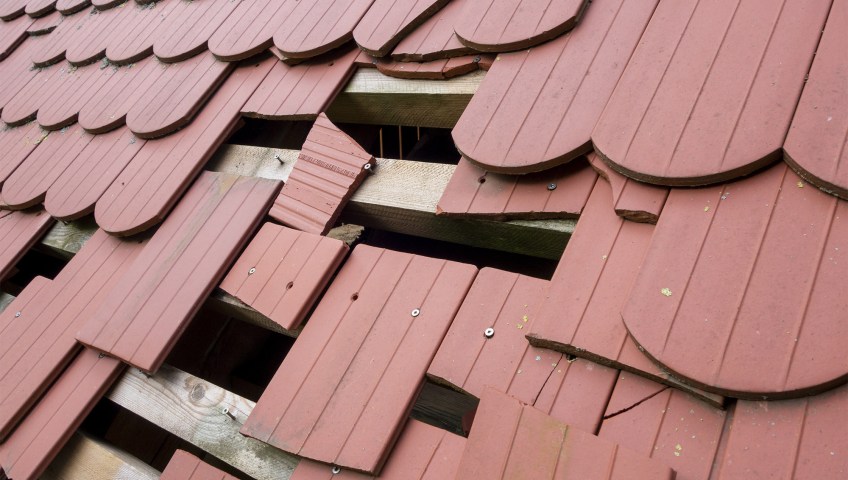
Sewer line repair isn’t a weekend DIY project. Professional On Point Plumbing & Heating plumbers can use a digital camera to check your pipes’ condition and find cracks or other problems.
Traditional sewer line replacement involves digging a trench to find and replace the damaged pipe. However, newer techniques allow for less-invasive repair methods.
All the drains in your house have a common connection to the main sewer line, through which wastewater will eventually flow to the city waste treatment center. That’s why all the drains in your home need to function properly without slow or clogged drainage. Slow drains are more than a nuisance; they’re often a warning sign of a bigger problem.
If one drain in your home is clogged, you can try some simple do-it-yourself steps to fix the issue. For example, you can try pouring a cup of salt and half a cup of baking soda down the drain, followed by hot water. This can break up some of the gunk causing the slow drain.
You can also bend a clothes hanger into a “hook shape” and slide it down the drain to catch hair and other debris. You can then pull the hook out of the pipe, removing most of the clogged material and clearing the drain. Finally, you can squirt dish soap down the drain and pour very hot tap water to clean the remaining gunk and restore normal drainage.
Pools of septic water
A septic system is the underground plumbing that takes care of waste water from household appliances, fixtures, and sinks. It is a private system and consists of a house sewer drain, septic tank, distribution box, and soil absorption field (leach field). A septic system will last a long time if it is properly located, designed, constructed, and maintained.
A home’s septic system is designed to be safe for a family, pets, and the environment, but it can become clogged or overloaded with solids. This is why it is important to keep a regular schedule of pumping, inspection, and maintenance with a licensed plumber.
If you have a pool, keep in mind that it may affect your septic system. You should have your septic system inspected before putting in a pool, and it is recommended that you locate the pool away from the septic system. Pools, hot tubs, and ponds can cause pools of septic water on the ground above the leach lines, which is not only unsightly but also dangerous for children and pets.
Pools can also block sunlight and air from the leach field, which are necessary for the absorption and evaporation of the effluent. In addition, the oxygen in the air helps the microorganisms further break down the waste products.
If you have a pool and notice that the leach line is not draining, it could be caused by a problem with the inlet baffle of the septic tank or a broken septic vent. It is also possible that the private sewer lateral has collapsed and needs to be replaced. To determine the source of the problem, city crews will televise the sewer lateral and provide the property owner or resident with a video free of charge.
Persistent Odors
If the odor of sewage is lingering, it is time to call a professional. This smell indicates that there is a problem with the sewer line, which can be dangerous. It can back up into your house and cause damage to the plumbing system. The problem is usually a blockage or crack, which only a plumber can fix.
The first thing you should check is the p-trap on each drain in your home. The p-trap is a U-shaped pipe that connects on one end to the drain and on the other end to the main sewer line. When working properly, the p-trap holds water that prevents gases and odors from entering the house through the drain. If the p-trap is dry, running some water in the sink for a few minutes should solve the issue and allow it to regain its protective moisture barrier.
Another potential source of odors is the roof vent pipe. These pipes carry sewer odors out of your building, but if they are blocked in any way, the odors will stay inside. This is often caused by a clog or improperly installed venting, which only a professional can fix.
Outdoor odors are also an indicator of the condition of your sewer line. Sewer odors that linger in the yard indicate that the sewage line is leaking or has a hole. This can lead to expensive yard repairs and a health hazard for you and your family.
While sewage odors can be unpleasant, they are not as hazardous as other environmental odors. If you notice a strong and persistent odor, contact your local sewer repair company to schedule an inspection and possible repairs.
Mushy Yards
If it’s been a while since it rained and you see water or mud pooling in your yard, it could be a sign that the sewer line is broken. This means that bacteria, waste, and other debris are leaking from the broken line underground, flooding your yard. If the problem isn’t addressed, the ground may continue to erode and sink into the basement of your home.
Clogged drains in multiple fixtures throughout your home may also indicate a broken sewer line. If a toilet won’t flush or you hear gurgling from your shower or sink, it could be because a clog is blocking the main sewer drain, which accepts wastewater from all your sinks, tubs, and toilets as well as your washing machine. If the clog is severe, it could even back up into your home and cause extensive water damage and sanitation problems.
Foul odors are another common sign of a broken sewer line. This smell is released when the sewage breaks through and mixes with fresh air, creating an unmistakable, unpleasant odor. The odor might also make its way into your home through drains and vents.
A muddy yard can also be caused by poor soil drainage, especially if the ground is compacted or covered in tree roots. If you’re experiencing this issue, consider laying down bales of straw or pine flakes in the affected area. These temporary solutions will help to dry up the mud and allow you to work in your yard without getting stuck or tracking mud into your house. To fix the problem for good, you should look into constructing French drains or other permanent solutions to improve your home’s drainage system and keep water from standing in your yard.
Mold
Mold is an organism that needs three things to survive: water, oxygen, and food. It thrives on dead organic material and can be found outdoors as well as indoors, but it must be kept in check and treated with care if it is to avoid becoming a health issue. In some cases, mold spores can travel airborne and be inhaled, leading to headaches, nausea, and other health problems.
A clogged sewer line can leave behind debris that attracts mold and other bacteria. It can also leak sewage, which will produce a foul odor. A professional should be called in to inspect and repair the problem as soon as possible.
Sewer odors can also be a sign that the main sewer line is experiencing serious damage or wear and tear. Cracks or holes in the line can allow sewage and other debris to escape, which will cause the drains in the home to stink.
A faulty sewer line can even be a contributing factor to other issues in the house, such as high humidity and condensation. When water and moisture are allowed to collect in the walls, floors, and ceilings of the home, it can lead to mold growth, which is difficult to remove once it has taken root. Professionals can help by installing dehumidifiers and ventilators, as well as fixing any water leaks or moldy areas of the home.



